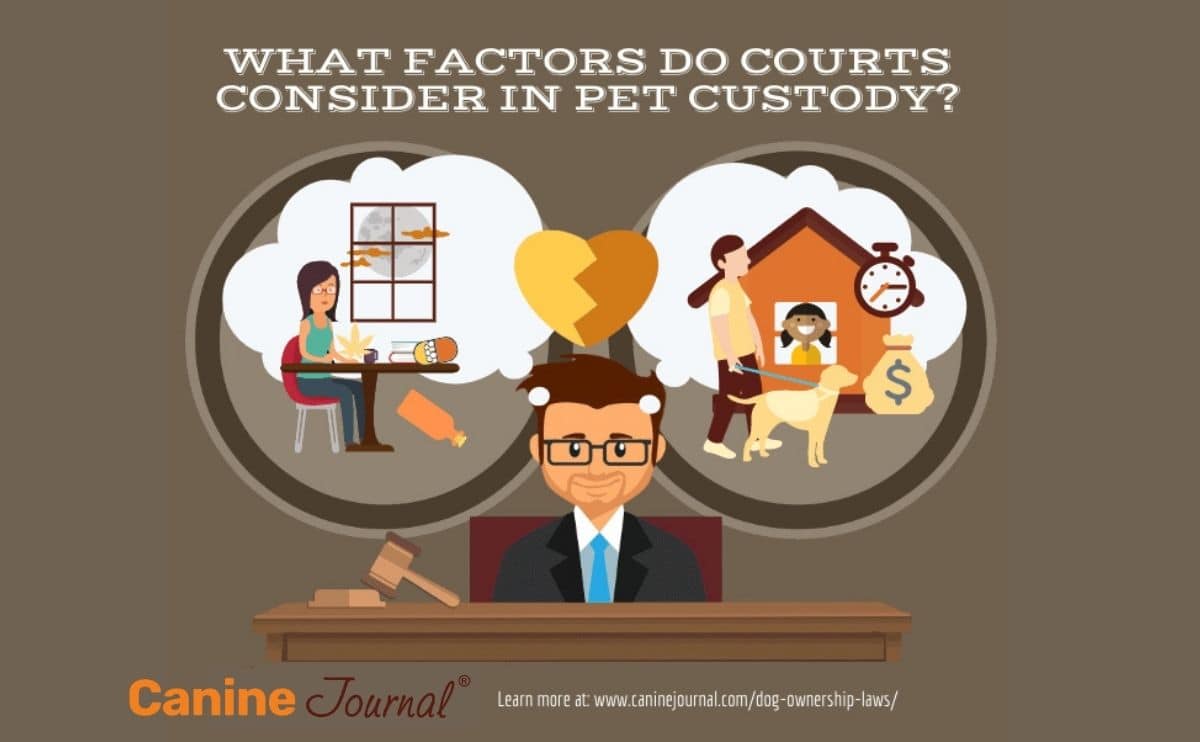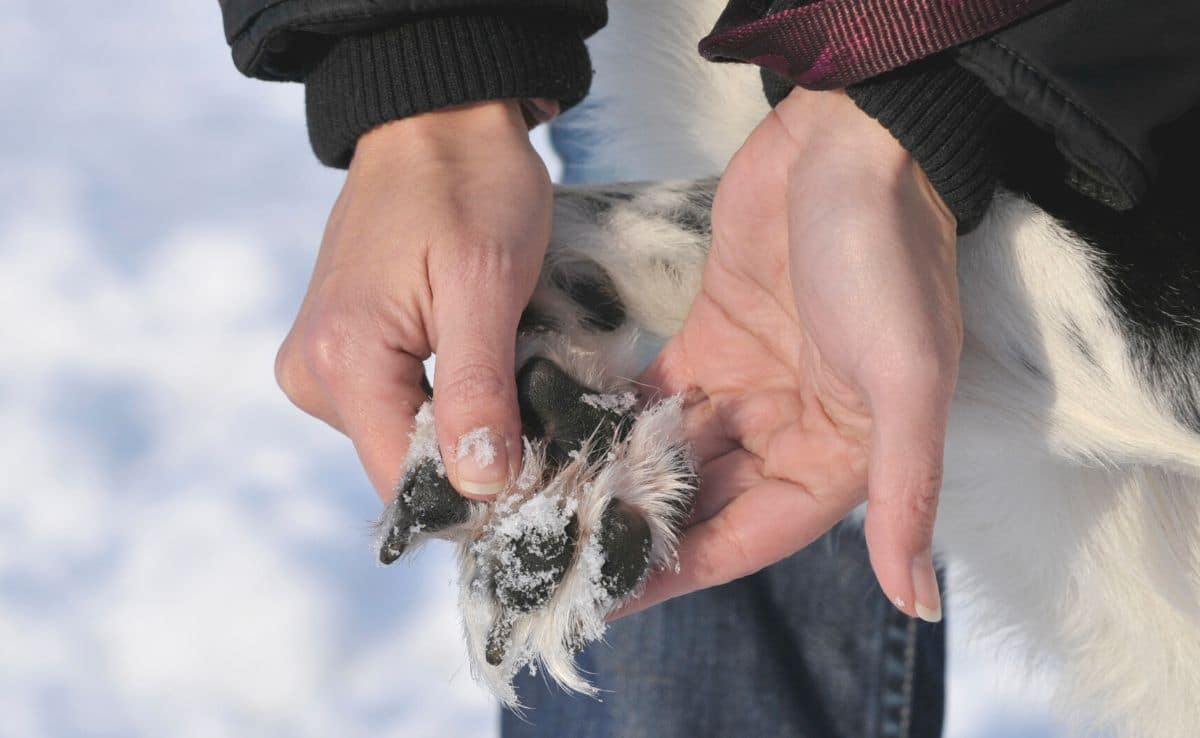They Took the Dog! The Shocking Truth About Pet Custody Laws and Stolen Pets
When you purchase through links on our site, we may earn a commission. Here’s how it works.

Imagine this: You come home, and your dog, your best friend, your couch companion, your four-legged therapist, is gone. Vanished. Stolen in broad daylight. Or worse, legally taken by an ex who claims they have just as much right to your pup as you do. Dog custody battles after breakups are more common than you think, and depending on your state’s pet custody laws, you might not have the final say in who keeps your dog.
Table of Contents
Sounds like a bad movie plot, right? Wrong. This happens all the time. From stolen dog horror stories to ugly legal battles over who owns a dog lawfully. People are losing their pets in ways they never saw coming. Courts often treat dogs like property, not family, meaning you could lose your pet the same way you’d lose a couch in a messy breakup. And what if your dog is stolen? Dog theft laws vary wildly. Some states treat it as a minor offense, while others classify it as a serious crime.
But wait, it gets even messier. What happens to your dog if you die? You might assume your pup would automatically go to a family member. But without a plan, they could end up in a shelter, in the wrong hands, or caught in a legal limbo. Believe it or not, pet inheritance laws decide where your dog goes, and if you don’t plan ahead, the law might not work in your favor.
So, what happens if someone takes your dog? Do you have legal rights to get them back? And how do you make sure your pup doesn’t end up in the wrong hands, whether you’re alive or not? Let’s break down the shocking truth about dog custody laws, pet inheritance, and stolen dog cases before it happens to you.
How Do Courts Decide Pet Custody?

If you and your ex can’t agree on who gets the dog, the unfortunate reality is that a judge will decide for you. But unlike child custody cases, where a court prioritizes the child’s best interest, pet custody battles are often much colder and more legally rigid. In most states, dogs are still classified as personal property. This means that the fight for your pet’s custody is legally treated the same way as dividing up furniture, cars, or bank accounts.
This can be a heartbreaking realization for dog owners who view their pets as family. But before stepping into court, it’s crucial to understand how judges actually determine who gets the dog in a divorce or breakup. While some states have started recognizing the emotional bond between pets and their owners, many still rely on strict legal ownership rules to settle disputes. Here’s what courts consider when making a pet custody decision.
1. Who Legally Owns The Dog?
One of the first things a judge will look at is legal ownership records. If one person purchased, adopted, or was gifted the dog before the relationship, they are typically considered the rightful owner under dog ownership laws. This means that even if both partners helped raise and care for the dog, the judge may rule that the original owner keeps the pet.
However, the case becomes more complicated if the dog was acquired during the relationship. In most states, pets obtained while married are considered community property. This means ownership is shared between both partners. In this scenario, a judge will then turn to other factors to decide who should keep the dog.
Tip: If your name is on the adoption papers, purchase receipt, or microchip registration, this is strong evidence of legal ownership.
2. Who’s The Primary Caregiver?
Even if both partners technically own the dog, the court may consider who acts as the pet’s primary caregiver. Judges often look at who handles the daily responsibilities, including:
- Vet Care. Who takes the dog to vet appointments?
- Financial Responsibility. Who pays for food, grooming, medical bills, and pet insurance?
- Time & Effort. Who spends the most time walking, training, and feeding the pet?
Having a strong paper trail is crucial. If you’ve been the one paying vet bills, purchasing dog food, or scheduling appointments, make sure you have receipts and records to prove it. Without documented proof, your ex could claim they played an equal role in caregiving, making it harder for you to win custody.
Tip: Bank statements, pet insurance policies, and even social media posts showing you caring for the dog can help establish you as the primary caregiver.
3. Can You Provide A Stable Home?
Another major factor courts consider is which party can offer a better living situation for the dog. Judges may look at:
- Living Space. Does one person have a house with a yard while the other lives in a small apartment?
- Work Schedule. Does one partner work long hours or travel frequently, leaving the pet alone for extended periods?
- Future Stability. Can both owners realistically provide for the pet long-term?
If one person’s lifestyle makes it difficult to care for a dog, the judge may rule in favor of the more stable and accommodating home. For example, if your ex works 60-hour weeks and travels constantly, but you work from home and have a routine schedule, you may have a stronger case for custody.
4. Are There Kids Involved?
Courts don’t just consider the relationship between the owners and the pet. They also look at how the dog impacts other family members. If there are children in the household, the judge may decide that keeping the pet with the kids is in their best interest.
For example, if you and your ex have children who are emotionally attached to the dog, the judge may award custody to the parent who has primary custody of the children. Even if the other partner was the dog’s main caregiver. Why? Because separating a child from their pet could be emotionally damaging, judges often try to minimize distress in these situations.
Tip: If you want to keep your dog and you also have primary custody of the kids, bring up how important the pet is to their well-being. Judges may prioritize keeping them together.
5. Do You Have A Clean Record?
Your personal history can play a bigger role in pet custody than you might think. If one partner has a history of domestic violence, animal abuse, drug use, or legal troubles, a judge may consider them unfit to care for the dog.
Courts will look at:
- Any record of animal neglect or abuse
- Domestic violence cases (many states consider a history of violence when making pet custody decisions)
- Substance abuse issues that could affect the pet’s well-being
Even if you were the primary caregiver, a questionable background could work against you. For example, if your ex can prove you left the dog alone for long periods, struggled with addiction, or had past legal troubles, they might argue that they’re the more responsible pet parent. Even if they weren’t previously involved in daily care.
Tip: If your ex has a history of neglect or abusive behavior, collect witness statements, vet records, or past police reports to support your case.
The good news for responsible pet parents is that today’s legal system is making some strides in treating dogs as part of the family. Some recent court decisions have allowed for shared custody, visitation, and even pet alimony. Most of these involve dog ownership, rather than cats or other pets.

Written Agreements Are Legally Binding
The most foolproof way to avoid a devastating custody battle is to settle ownership ahead of time with a written dog custody agreement. This legally binding document outlines who gets full custody, whether visitation is allowed, and how decisions regarding the dog’s care will be handled. Think of it as a safety net and a way to ensure that no matter how ugly things get between you and your partner, your dog’s future is already decided.
If you’re entering a marriage or long-term relationship, you might even consider a pet prenup. This is an agreement that determines pet ownership in the event of a breakup or divorce. It might feel unromantic to think about now, but if the worst happens, you’ll be grateful you planned ahead.
Judges Will Honor A Pet Custody Agreement – If You Have One
Most judges won’t waste time debating who the better pet parent is. Courts are overloaded with cases, and unless you live in a state that considers a pet’s well-being in custody disputes, the judge will likely default to the terms of any written agreement. If you and your ex have a legally binding pet custody contract, the court will typically enforce it without question. In the eyes of the law, pets are property, not children.
If there’s no prior agreement, a judge might look at ownership papers, receipts, and financial records. They won’t necessarily consider who loves the dog more or who spent the most time caring for them. This means that even if you’ve been the one feeding, training, and taking your dog to the vet for years, you could still lose them if the legal paperwork isn’t in your favor. It’s a harsh reality, but one that countless devastated pet owners have faced.
Put It In Writing. If you love your dog, don’t leave their future up to chance. When emotions are running high and legal battles begin, a signed pet custody agreement may be the only thing standing between you and losing your best friend forever.
How Do I Prove Dog Ownership?

Losing a dog is devastating enough, but imagine finding them, only for someone else to falsely claim they belong to them. It happens more often than you’d think, especially in cases of stolen dogs, pet custody battles, or lost dogs being “adopted” by someone else. If you don’t have solid proof of ownership, you could be fighting an uphill battle to get your pet back.
The good news? You can legally prove your dog is yours. However, you must have the right documentation in place before a dispute arises. Here’s how to prove dog ownership and protect yourself from losing your pet to someone else.
1. Registration & License: The First Line Of Defense
If your dog is licensed with your city, county, or state, that official record is one of the strongest legal proofs of ownership. Many areas require dog owners to register their pets annually, and the license is typically issued in the owner’s name.
- If someone else claims your dog, showing a valid pet license with your name and address can help confirm your legal ownership.
- Some locations tie the license to the dog’s microchip, further strengthening your case.
- If you move, update your pet’s registration immediately so there’s no gap in your records.
If your dog isn’t registered, check with your local animal control or city government office to find out how to get a dog license. It’s inexpensive, easy, and could later save you a massive legal headache.
2. Veterinary Records: A Paper Trail That Proves You’re The Owner
Veterinary records don’t just track your dog’s health. They also provide an official history linking you to your pet.
- Every time your dog visits the vet, their file is updated with your name, address, and contact information.
- If someone else tries to claim your dog, your vet can provide documentation proving you’ve been responsible for the pet’s medical care.
- Some medications and treatments are specific to your dog, making it even harder for someone else to claim ownership falsely.
Keep digital and physical copies of vet bills, vaccination records, and treatment history. If ownership is ever disputed, these documents can be invaluable.
3. Microchip Records: The Ultimate Proof Of Ownership
A microchip is one of the most effective ways to prove a dog is yours, but only if they are registered correctly.
- If your dog is stolen or lost and ends up at a shelter or vet clinic, they will scan the microchip to see who the registered owner is.
- The microchip company keeps records of who registered the pet, so even if someone else claims the dog, they can’t change ownership without your permission.
- Some thieves attempt to re-register stolen pets, so always keep your microchip information up to date to prevent fraudulent ownership transfers.
If you’re unsure whether your pet’s microchip is registered in your name, check with the microchip provider (like HomeAgain or AKC Reunite). If your contact info isn’t current, update it immediately.
4. Adoption Or Purchase Records: Proving You Brought Your Dog Home
If you adopted your dog from a shelter or rescue or purchased them from a breeder, those original records are powerful legal proof of ownership.
- Adoption contracts from shelters or rescues will have your name listed as the legal adopter.
- Purchase agreements from breeders should include your details as the buyer.
- Reputable breeders and rescues also microchip their dogs, providing another layer of ownership verification.
If a dispute ever arises, these records confirm the date and location of adoption or purchase, proving the dog legally belongs to you. Keep all adoption papers, sales receipts, and emails from the shelter or breeder in a safe place, you never know when you might need them.
5. Transfer Of Ownership Agreement For Dogs Passed Between Owners
If you took ownership of a dog from a previous owner, having a signed transfer of ownership agreement can be crucial in proving the pet is legally yours.
- These agreements typically state who the original owner was and who the dog was transferred to.
- They often include dates, witness signatures, and sometimes even a notary seal to make them more official.
- If an ex-partner, roommate, or previous owner tries to take the dog back, this document can stop them in their tracks.
If you’re rehoming or adopting a dog from a private individual, always get a signed transfer of ownership document. Without it, someone could try to reclaim the dog later.
6. Pedigree Registries: Proof For Purebred Dogs
If your dog is registered with organizations like the American Kennel Club (AKC) or United Kennel Club (UKC), that paperwork can help prove ownership. Especially in legal disputes over high-value purebreds.
- Breed registries track ownership from the breeder to the current owner.
- If someone else tries to claim your dog, they must be able to show updated registration in their name, which they won’t be able to do if you’re the rightful owner.
If you have a purebred dog, keep all registration paperwork safe. It may be your strongest proof of ownership in a dispute.
7. Photos & Videos: The Evidence That Speaks For Itself
Sometimes, the simplest proof is visual documentation. If you’re regularly photographed or recorded with your dog, those images can help prove a long-term, personal connection to the pet.
- Time-stamped photos and videos from holidays, vet visits, or daily life can be valuable if someone else is claiming your pet.
- If the case goes to court, a judge may look at consistent photographic evidence of you with the dog over time.
Keep your phone full of photos and videos that show clear, consistent ownership. These can serve as backup proof in case legal documents aren’t enough.
How Do I Legally Transfer Ownership Of A Dog?

If both parties agree, legally transferring a dog’s ownership is pretty straightforward. Typically, all that’s required is a transfer of ownership agreement signed by the previous and new owners. At a minimum, this form requires information about both parties and basic information about the pet. However, some counties, cities, and states require the form to be notarized and have additional details.
You can find sample forms online, but be sure to check on your local and state laws about exactly what’s required. Here’s a brief rundown of information to include if you want to cover your bases:
- Full legal names, addresses, and contact information for the previous and new owners
- Basic pet information: name, breed, gender, age, weight, color, etc.
- Medical information, including records of vaccinations, veterinary checkups, and previous treatments
- License/tag number and any microchip or other registration numbers
- Notarized signatures of both parties
Tip: To avoid any possible future disputes, it’s wise to include as much information as possible and make it clear that both parties are agreeing to a full transfer of rights and responsibilities regarding the dog.
Why Microchipping Can Make All The Difference
Microchipping your dog and registering you as the owner is one of the best ways you can prove ownership, especially when other evidence falls short. Just watch this brief video below. In this case of a nasty custody battle over a lost pup, it would be the pivotal deciding factor.
What Happens To Pets When Owners Die?
Most pet owners assume that their beloved dog or cat will automatically go to a family member or close friend if they pass away. But legally, that’s not how it works. Pets are often treated as property unless specific arrangements are made. This means their future could be decided by state inheritance laws, next-of-kin disputes, or even a shelter intake officer.
Many pets end up in shelters after their owners die. Especially if there’s no clear legal plan in place. Some may be rehomed, but others face a far worse fate. If you want to ensure that your pet is cared for after your death, you need to take action now. If a pet owner dies without leaving clear instructions, several things can happen, and none of them are ideal.
- Next Of Kin Decides. If you have family members, the closest next of kin may inherit your pet. But that doesn’t mean they’ll keep them. Some may surrender the pet to a shelter or rehome them to someone else.
- Pet Goes To A Shelter. If no family or friends claim the pet, animal control may step in and place them in a shelter. They could face adoption, long-term shelter life, or even euthanasia if a home isn’t found.
- Disputes Between Family Members. In some cases, multiple relatives may want the pet, or no one wants to take responsibility. This can lead to legal battles, delays, and stressful uncertainty for the animal.
Even if a relative steps in to care for the pet, they may not be financially prepared to take on the responsibility of vet bills, food, and other expenses. That’s why having a legally binding plan is critical.
How To Make Sure Your Pet Is Protected After You Pass Away

If you want to ensure your pet is well cared for after your death, you need to make legal arrangements. Verbal promises won’t be enough. Here are the best ways to protect your pet:
1. Name A Pet Guardian In Your Will
One of the simplest ways to ensure your pet is taken care of is by naming a designated pet guardian in your will. This person will inherit your pet and be responsible for their care.
- Choose Someone You Trust. Make sure they’re willing and able to care for your pet long-term.
- Discuss It In Advance. Don’t surprise someone with unexpected pet ownership in your will.
- Provide Financial Assistance. Consider leaving money for the pet’s care (but don’t leave the money to the pet itself; legally, pets can’t inherit assets).
While a will can dictate who gets your pet, it doesn’t provide ongoing financial support for their care. That’s why some owners set up a pet trust.
2. Set Up A Pet Trust
A pet trust is a legally binding document that provides both care instructions and financial support for your pet after your death. It ensures that funds are used exclusively for their well-being.
- How Does It Work? You set aside money in a trust, along with detailed instructions for your pet’s care (food, vet visits, medications, routines).
- Who Manages It? A designated trustee distributes the funds and ensures the guardian follows your wishes.
- Why It’s Better Than A Will. Unlike a will (which may take weeks or months to go through probate), a pet trust goes into effect immediately upon your death or incapacitation.
Tip: Work with an attorney to set up a pet trust properly; some states have specific laws governing pet trusts.
3. Arrange For A Rescue Or Sanctuary As A Backup Plan
Even if you name a guardian in your will or set up a trust, life is unpredictable. The person you choose may not be able to take your pet when the time comes. That’s why it’s smart to have a backup plan.
- Some no-kill shelters, breed-specific rescues, or pet retirement sanctuaries accept pets whose owners have passed away.
- You can pre-arrange care with one of these organizations, ensuring your pet won’t end up in a high-risk shelter.
- If possible, donate to the organization to help cover care costs.
4. Leave Detailed Care Instructions
Legal documents determine who gets your pet but don’t cover how the pet should be cared for. That’s why it’s essential to leave a pet care plan that includes:
- Your pet’s daily routine (feeding schedule, favorite activities)
- Any medical conditions and required medications
- The name of your vet and pet insurance details
- Personality traits, fears, or special needs
Store this information with your will, pet trust, or important personal documents, and let your chosen pet guardian know where to find it.
Our Personal Story: Who Will Look After My Dogs When I Die?
Michelle and Alex S., the founders of Canine Journal, recently reworked their wills and were asked what would happen to their dogs if they passed unexpectedly.
We do not have human children, but our two dogs (Lily and Barley) are our kids. So, when preparing our wills, our attorney asked if we wanted to make any provisions for them. While we had not considered this before, we definitely want to make sure they are taken care of in the event of our passing.
We talked to some good friends who are also dog lovers and asked if they would be willing to welcome our dogs into their homes, should something happen. They said yes, and then we figured out how much money is needed for them to live for another 8-10 years, given their respective ages. We then worked with our attorney to add these details to our will.
Hopefully, this clause won’t come into play during our current dogs’ lives, but we will update this as we get new pets over the years.
– Michelle Schenker, Dog Mom, Licensed Insurance Professional, & Co-Founder Of Canine Journal
Other Ways To Protect Your Dog From Theft Or Loss
Beyond legal planning, taking preventative security measures can help ensure your dog stays safe, especially in cases of pet theft, loss, or emergencies. One of the most effective ways to track your dog’s whereabouts is by using a GPS dog collar, which allows you to monitor their location in real time. Some dog GPS trackers offer live tracking, geofencing alerts, and escape notifications to ensure you can find your pet quickly if they go missing. Another essential tool is a pet home security camera. This helps monitor your dog while you’re away and provides video evidence for pet theft or suspicious activity. Additionally, updating their collar ID tags can serve as crucial protection for a quick reunion should they go missing.
Has your dog ever gone missing or been stolen? Perhaps they’ve been at the heart of a custody battle? Please share your stories and tips with us and our readers in the comments section below.
Why Trust Canine Journal?
Sally has over 20 years of experience in human health sciences communications, including 10 years as an expert on pet health conditions, treatment, and keeping pets safe. She’s part of a team of dedicated canine professionals and long-time dog owners at Canine Journal. We test and research the best pet products, not only for our own pups but for all of our readers.



